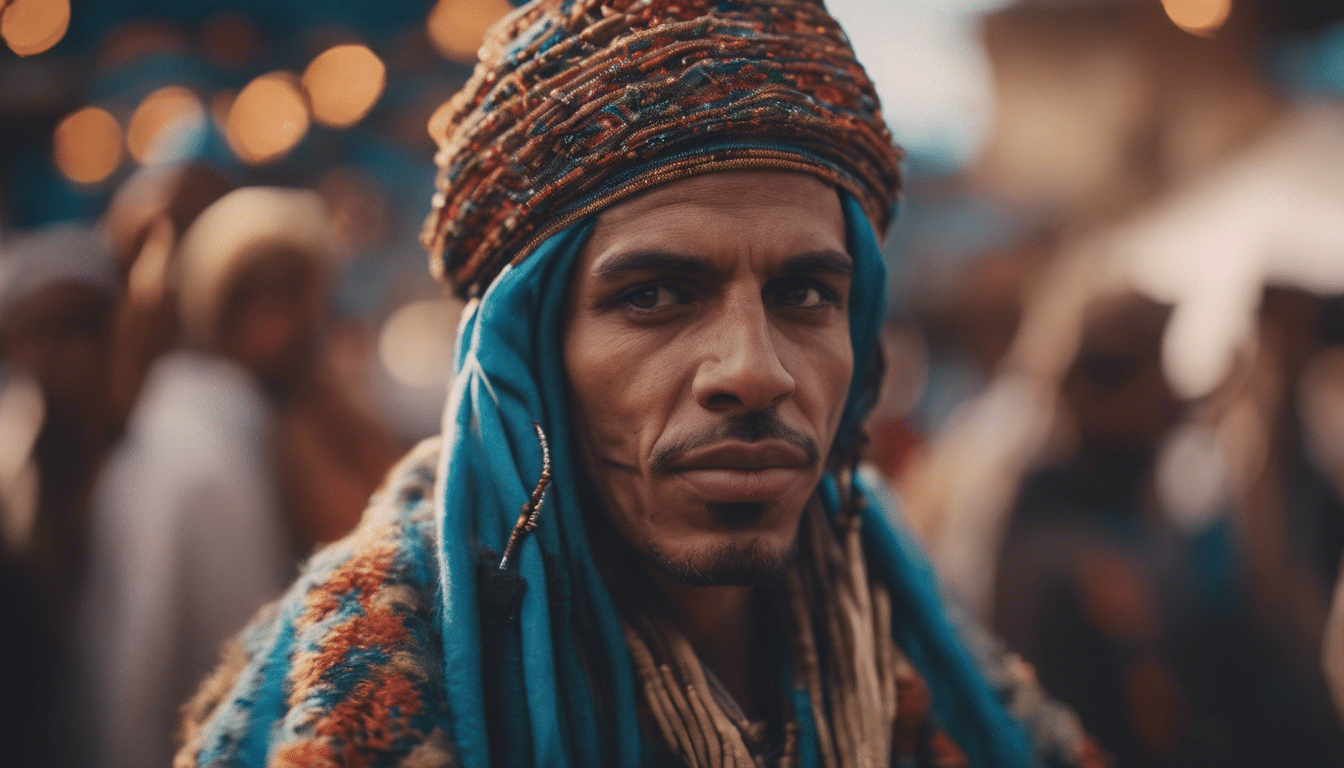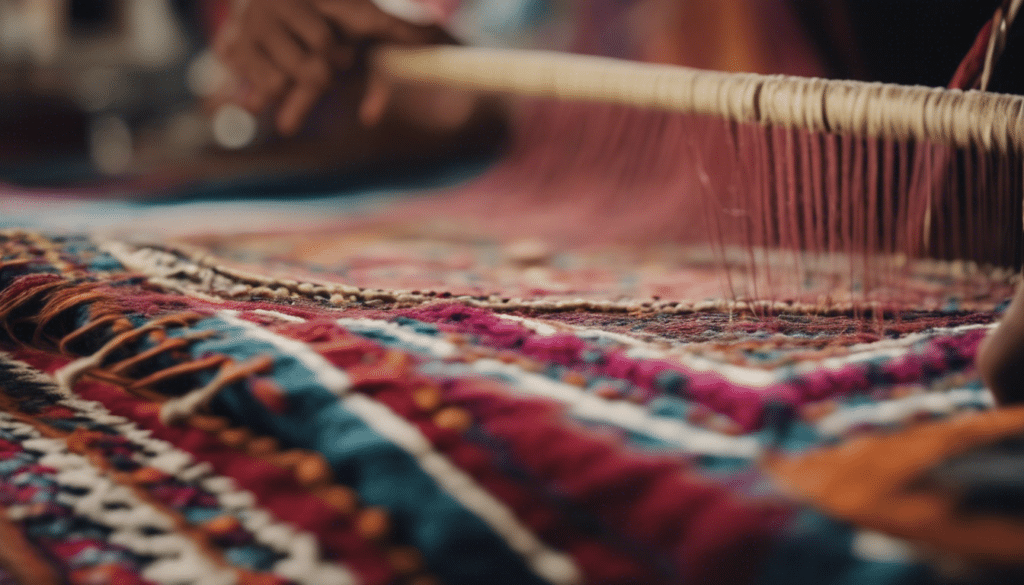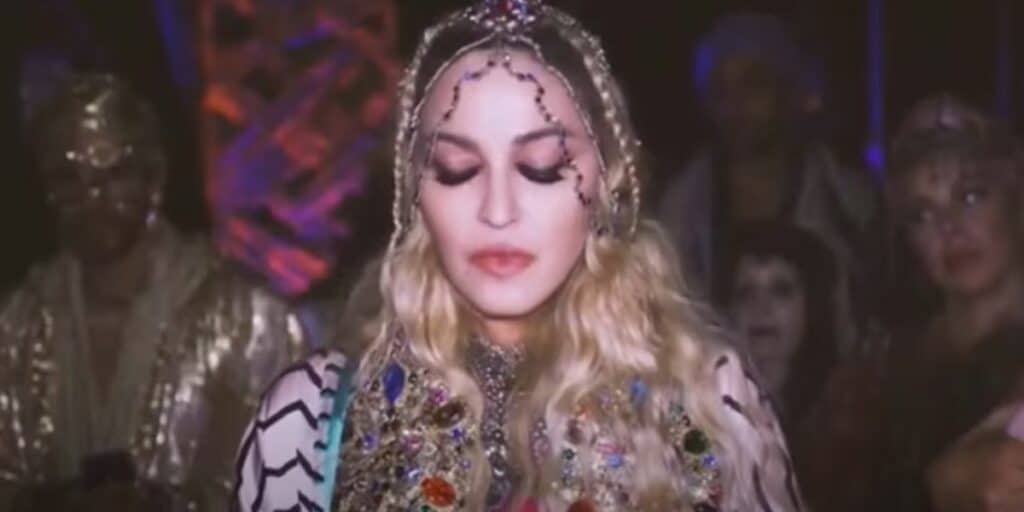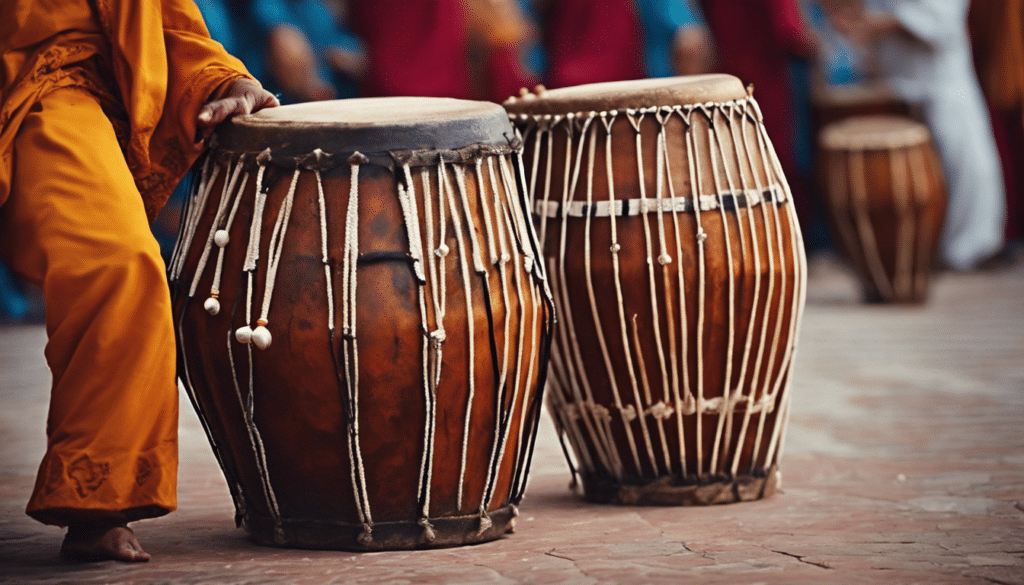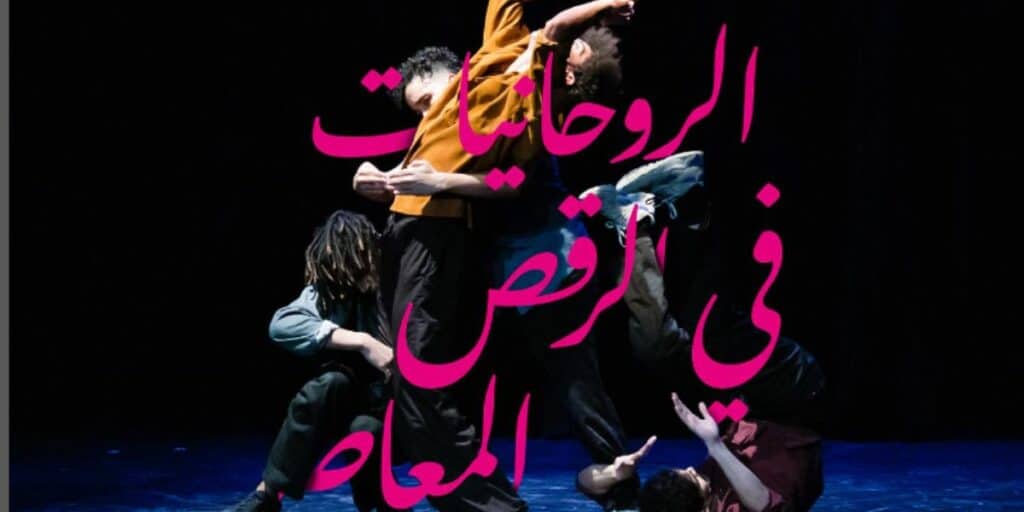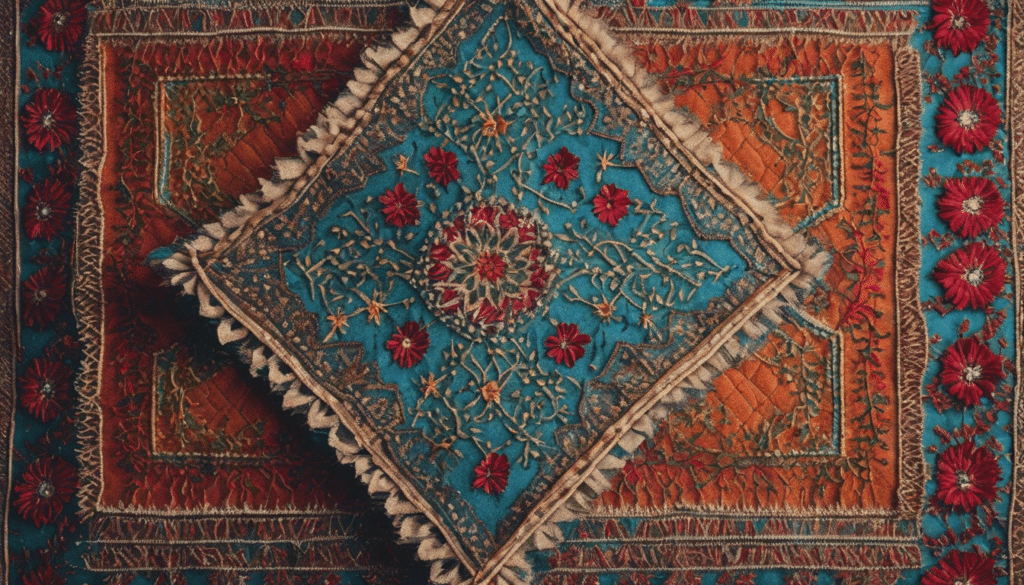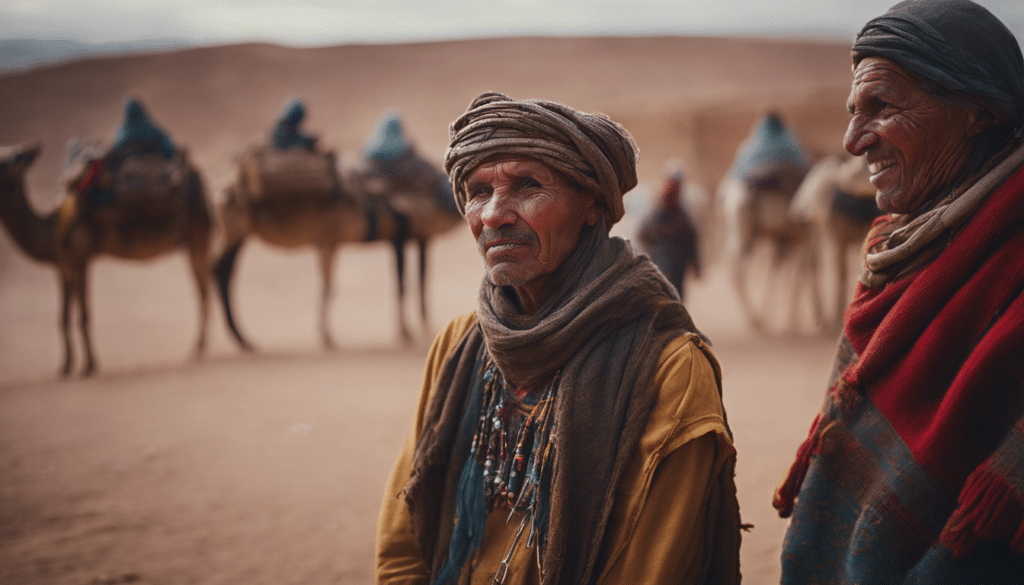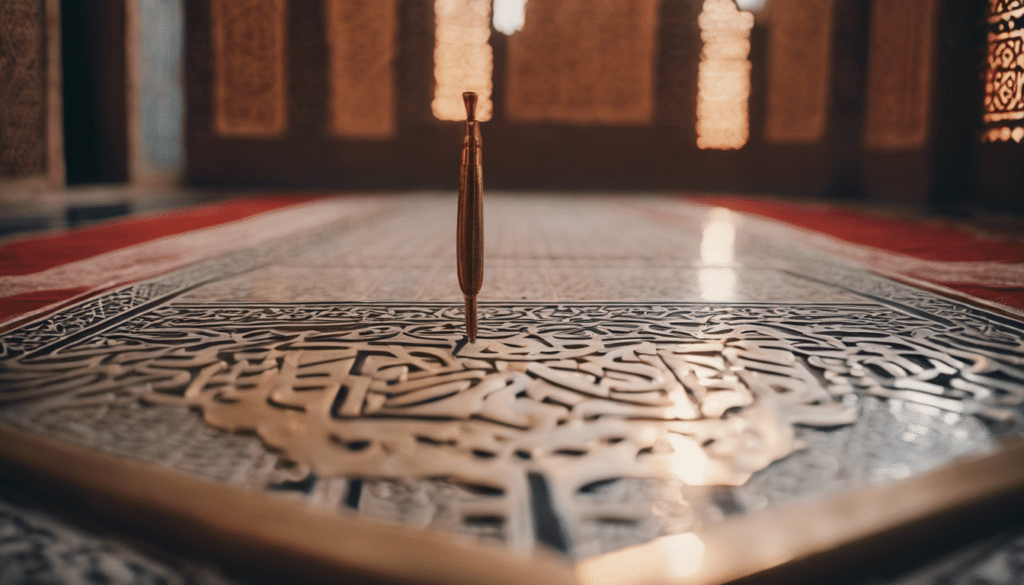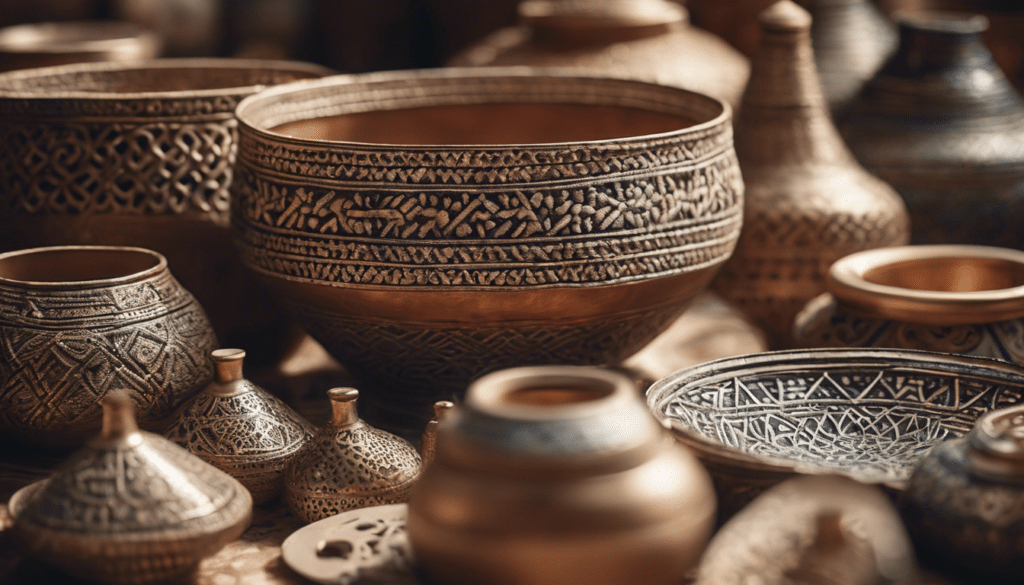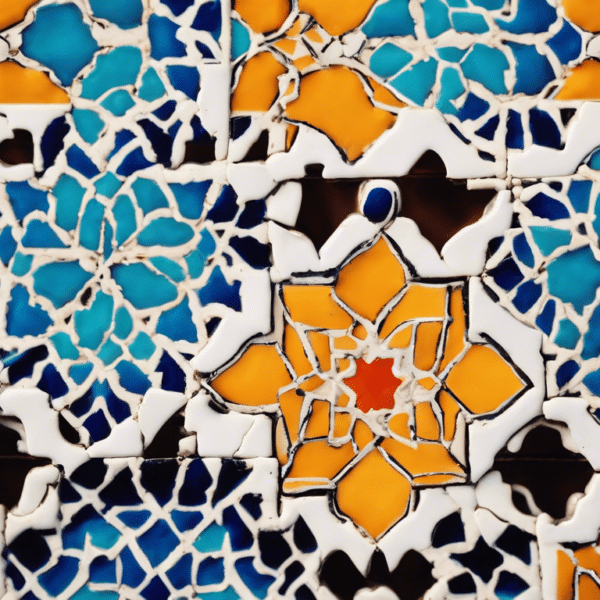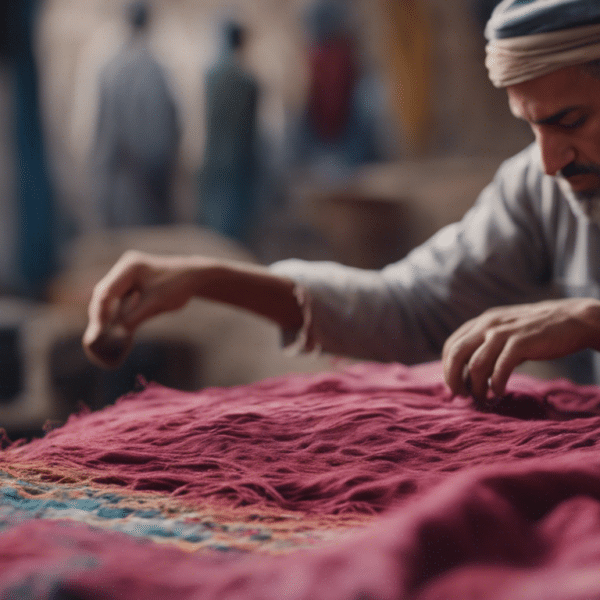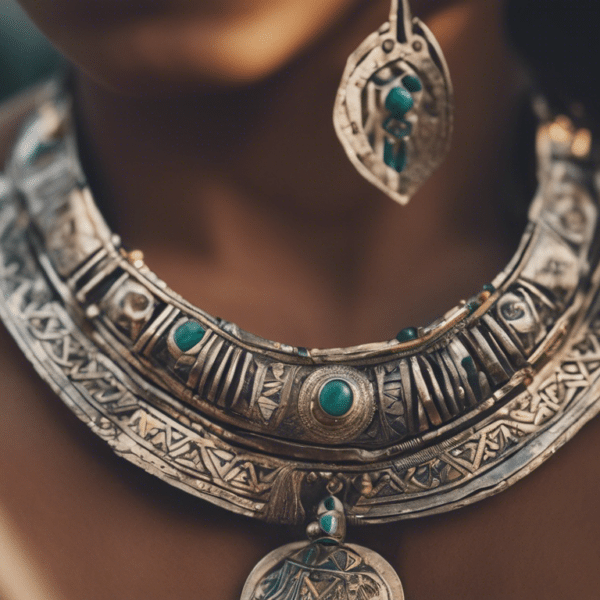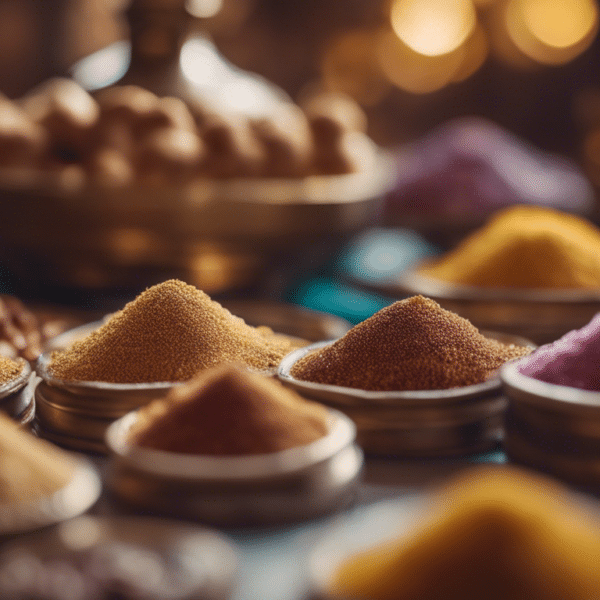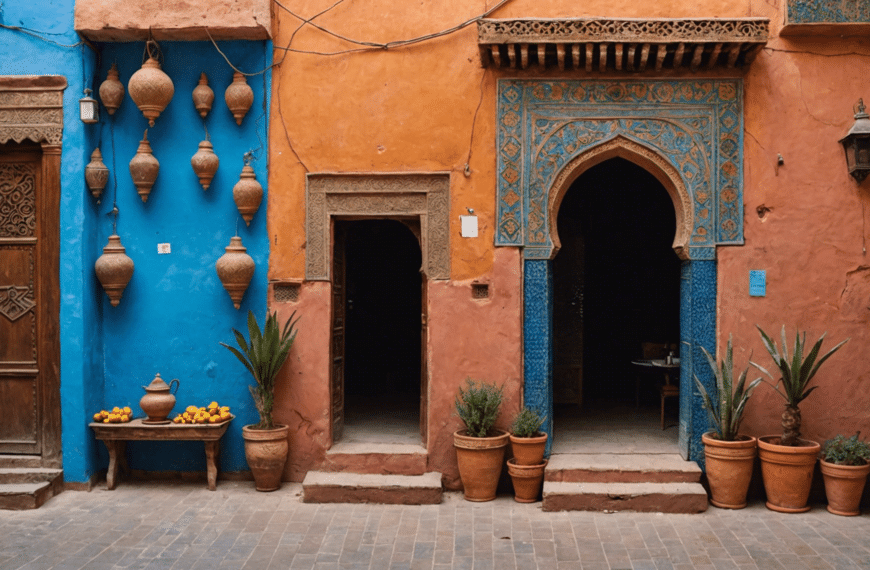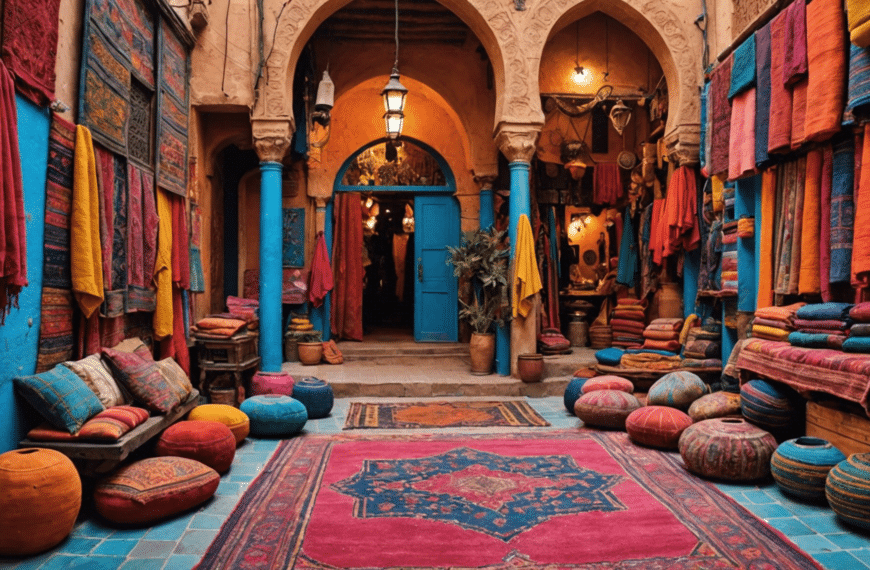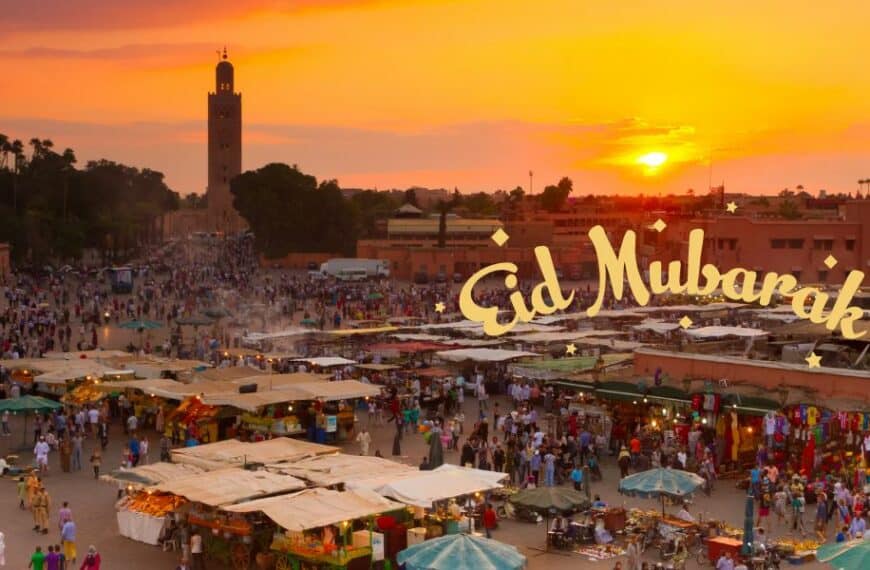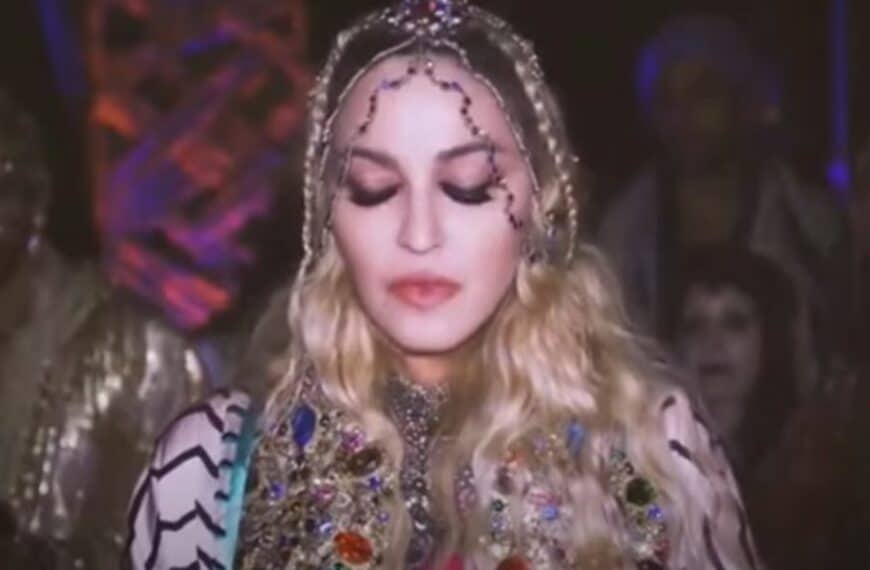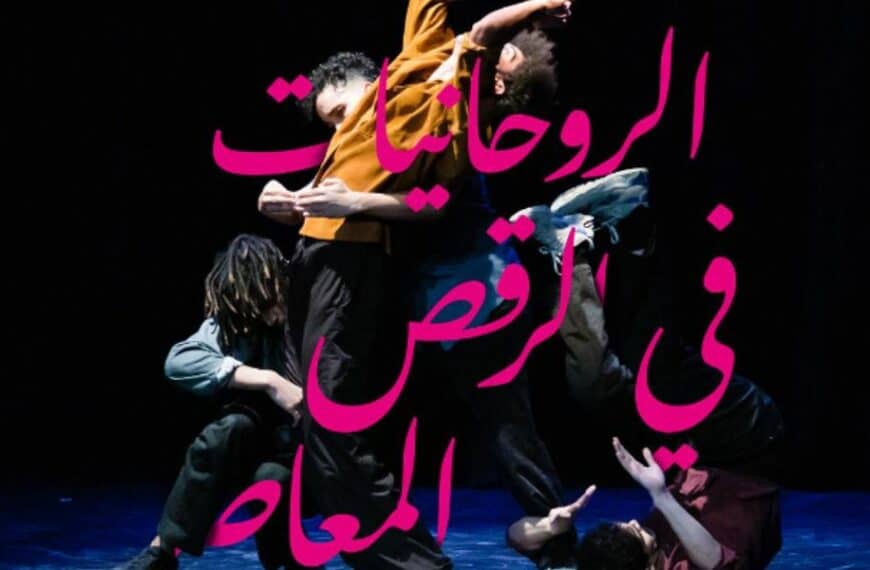Embark on a sonic journey through the heart of Morocco as we delve into the entrancing world of Gnawa music. This soul-stirring art form, woven from threads of African spirituality and the deep roots of Moroccan culture, calls out to the wanderlust in us all. Feel the pulsating beats and the spiritual chants, get swept away by the hypnotic dances – this is where tradition breathes vibrancy into the very air you breathe. Join us as we uncover the magic behind the mesmeric rhythms of Gnawa music, an auditory tapestry as rich as the Moroccan landscape itself.
Exploring the origins of Gnawa music
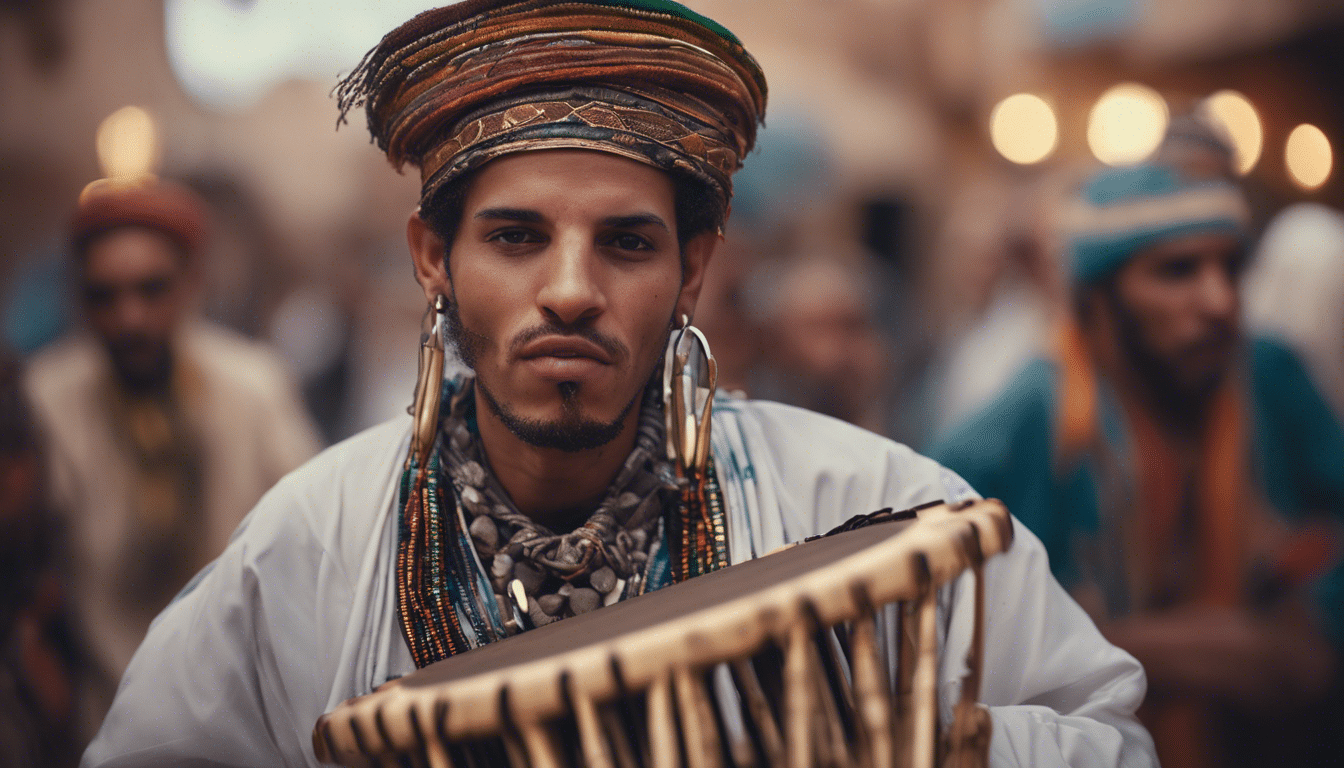
Imagine a melody that travels across time and space, a rhythm that echoes the journey of souls, and lyrics that tell stories of a rich cultural tapestry – welcome to the world of Moroccan Gnawa music. This musical genre, with its deep-rooted history, is not just an auditory experience but also a gateway to the spiritual and cultural essence of Morocco.
Gnawa music is a haunting and hypnotic form. It intertwines African-Islamic spiritual rhythms with poetic lyrics, creating an immersive experience that transcends the boundaries of mere entertainment. Let’s delve into the origins of this compelling sound and explore its significance in Moroccan culture.
The African Roots of Gnawa Music
Gnawa music has its genesis in the historical fusion of African and Islamic elements. It originated from the Gnawa people, who were descendants of African slaves brought to Morocco from sub-Saharan Africa. Over the centuries, these individuals preserved their unique cultural identity through music and spiritual rituals, creating a distinctive sound born from their African heritage and influenced by Arabic music traditions.
Musical Instruments Defining Gnawa
Central to Gnawa music are the guembri (a three-stringed lute), the krakebs (large iron castanets), and the rhythm of hand-clapping. Together, these instruments produce a trance-inducing sound that is characteristic of Gnawa. The guembri’s deep, resonant tones lay the foundation, while the krakebs add a metallic punctuation, and the collective clapping brings unity to the ensemble.
Spirituality and Lila Rituals
The essence of Gnawa music is intimately connected to its spiritual dimension. The Lila is an all-night ceremony that combines music, dancing, and chanting to evoke spirits and enter trance states. This ritual serves as a form of healing and communion for the Gnawa community, reaching back to their African roots and Islamic influences.
The Spread and Evolution of Gnawa
While Gnawa music has a rich history, it has not remained unchanged. It has steadily gained recognition beyond Morocco, influencing and being influenced by various musical genres such as jazz, blues, and reggae. Modern musicians collaborate with Gnawa maâlems (masters) to create fusion sounds, bringing this traditional music to new audiences worldwide.
Preservation of an Enduring Tradition
Despite its evolution, the core of Gnawa music remains the same — a symbol of resilience and spiritual depth. Efforts to preserve this cultural heritage are ongoing, with festivals like the Gnaoua World Music Festival in Essaouira celebrating the traditional and contemporary aspects of Gnawa.
Experience the Soul of Morocco
For travelers and music enthusiasts, experiencing Gnawa music firsthand is a journey into the heart of Moroccan culture. It’s not just the captivating rhythms or the soul-stirring chants; it’s also about understanding a community’s history, spirituality, and identity through their most beloved art form.
Gnawa music, with its distinct origins and continued relevance, remains a testament to Morocco’s diverse and dynamic cultural landscape. It is a story of pain, joy, and transcendence — a melodic bridge connecting the past with the present, the earthly with the divine. As we explore the origins of Gnawa music, we are not merely observing a genre; we are immersing ourselves in the lifeblood of Moroccan identity.
The spiritual and cultural significance of Gnawa rhythms
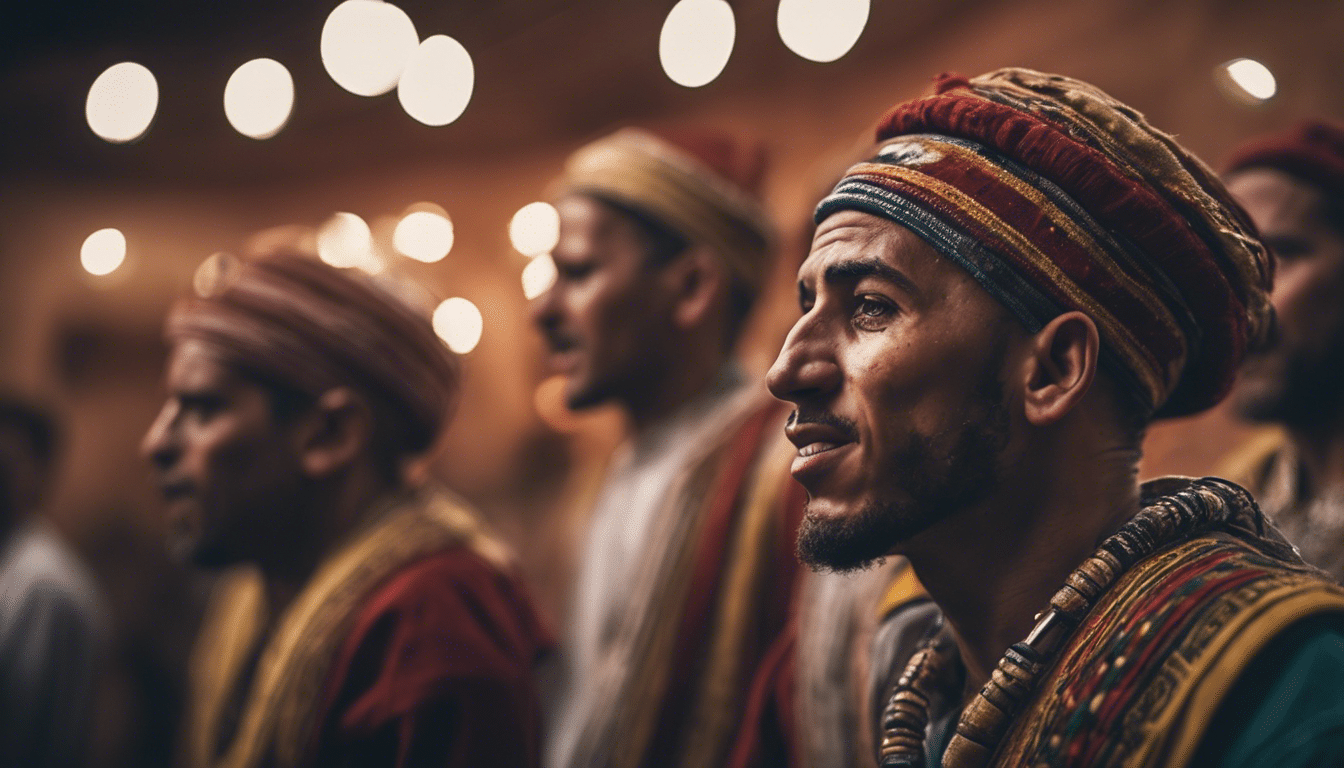
Underneath the fiery Moroccan sun and the star-studded African sky lays an ancient musical tradition that weaves through the air, as deep and wide as the sands of the Sahara. It’s called Gnawa music, and for those who have heard its rhythmic pulse, it’s not simply a style of music but a spiritual journey, a cultural emblem, and an unforgettable experience.
Gnawa music isn’t just a genre; it is a testament to a rich historical tapestry that spans across continents, from Sub-Saharan Africa through to the heart of Morocco. At its core, it is about connection – with the divine, with ancestral spirits, and with a community that finds common ground in the rhythms of the sintir and the clatter of the qraqeb.
To delve into the spiritual and cultural significance of Gnawa music is to step into a world where every beat and chant means something profound, where every performance is not just a show but a ritual, and where music is the key to understanding a complex history and a vibrant way of life.
Understanding the Roots of Gnawa
The roots of Gnawa music can be traced back to the Gnawa people, descendants of African slaves who were brought to Morocco centuries ago. Their music, infused with the agony and ecstasy of their history, became an integral part of their identity, a way to preserve their heritage and transmute their suffering into something transcendent.
The hypnotic music is built around the guembri or sintir, a three-stringed lute-like instrument that sets the rhythm for the qraqeb – large metal castanets that clatter in the hands of the musicians. These sounds are the heartbeat of Gnawa music and the backdrop for songs that are both a form of worship and a recounting of their ancestors’ stories.
The Lila: A Night of Spiritual Journey
At the heart of the Gnawa tradition is the lila, an all-night musical ceremony meant to heal and purify the soul. It’s during these ceremonies that the spiritual dimension of Gnawa music becomes most tangible. The maalem, the master musician, leads the ritual, invoking the spirits and guiding the participants through a journey that is meant to cleanse both the physical and spiritual bodies.
The power of the lila lies in its ability to establish a trance state among those present, through the repetitive rhythms and chants that escalate as the night progresses. This trance state is seen as a means of communicating with the spiritual realm, allowing for personal growth, healing, and a deeper understanding of the self and the universe.
Gnawa Music in Modern Morocco
Gnawa music isn’t confined to the lila. Its presence is felt in the fabric of modern Moroccan culture. The annual Gnaoua World Music Festival in Essaouira is a perfect example, where musicians from around the world come together to celebrate the global influence and enduring appeal of these ancient melodies and rhythms.
In towns and cities across Morocco, the sound of the sintir can be heard, calling locals and travelers alike to experience the magic of Gnawa. It’s become a symbol of Moroccan identity and a bridge between the past and the present, a testament to the country’s ability to honor its rich traditions while evolving with the times.
Gnawa: A Cultural Touchstone
More than music, Gnawa is a cultural touchstone, representing the resilience and creativity of a people and a country that have turned historical wounds into a vibrant form of artistic expression. It’s in the intricacies of the rhythms and the soulfulness of the chants that one can grasp the cultural significance of Gnawa.
Cultural enthusiasts and music lovers from around the globe are drawn to this unique genre, seeking to understand the stories woven into each line, the spirituality underpinning every note, and the communal bonds fortified through the shared experience of the music.
In a world where the past often slips away, the enduring strength of Gnawa music offers a powerful connection to the history of an enterprising people and the soul of a nation that continues to dance to the beat of its own drum, as timeless and enduring as the music itself.
Instruments that define the sound of Gnawa music
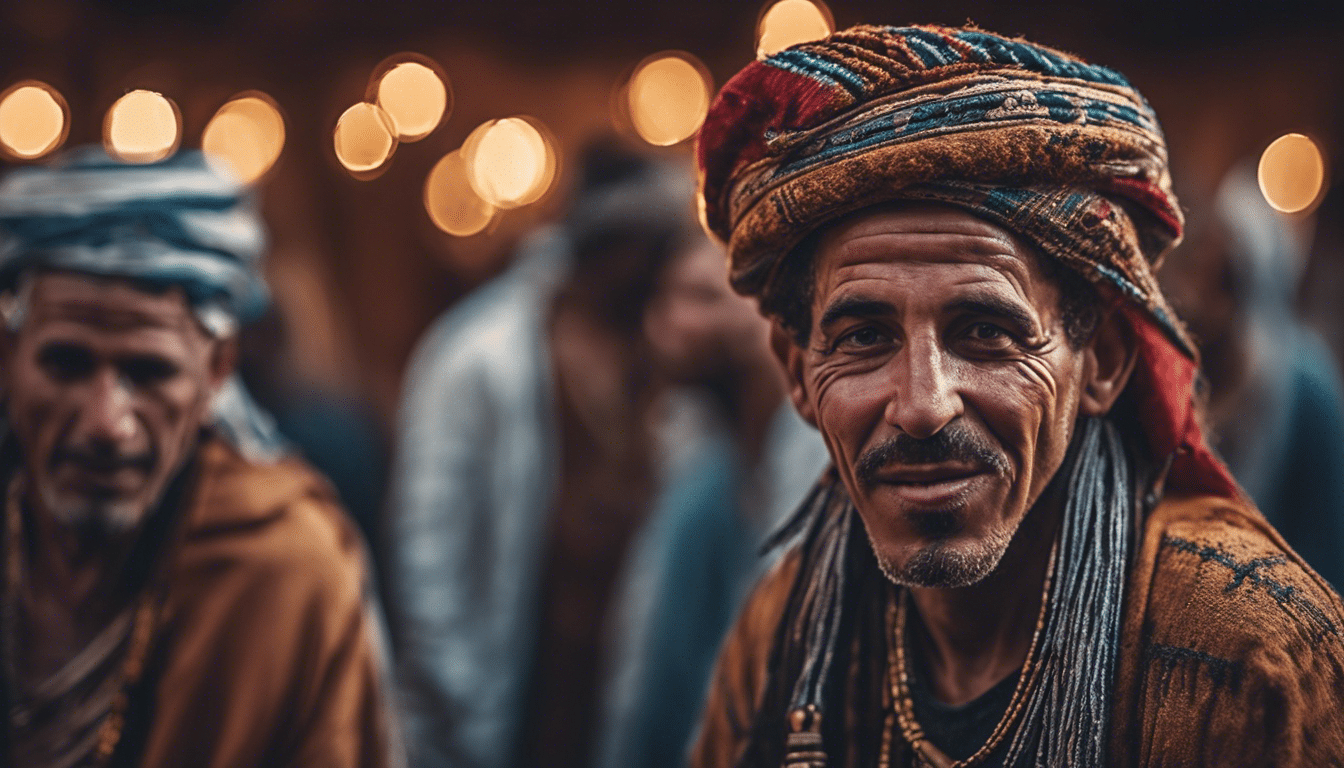
Moroccan Gnawa Music: Instruments that define the sound of Gnawa music
Imagine a world where rhythm and spirituality intertwine, where the echoes of ancient melodies transport you to a place of vibrant colors and captivating energies. Welcome to the soulful realm of Moroccan Gnawa music, a universe where unique instruments not only craft melodies but also anchor traditions and stories passed down through generations.
The rhythmic pulse of Gnawa music is inseparable from the enchanting instruments that give it life. Each instrument carries a weight of historical significance and contributes to the richly layered tapestry of sound that defines this entrancing musical style.
Gimbri (Sintir)
The heartbeat of Gnawa music is undoubtedly the gimbri, also known as the sintir. Resembling a three-stringed lute, this instrument’s body is often crafted from a hollowed-out piece of wood, covered with camel skin. The deep, resonant sounds it produces serve as the foundation for Gnawa rhythms. The gimbri player, or maâlem, uses it to lead the ensemble, setting the tone and guiding the flow of the music. It’s not merely an instrument but a vessel for storytelling.
Krakebs (Qraqeb)
In the hands of skilled musicians, the krakebs, or qraqebs – a type of large metal castanet – create a clattering percussive element that is instantly recognizable. When struck together in the proficient hands of Gnawa musicians, they create a rhythmic clinking that complements the gimbri’s bass notes. This clashing sound is the driving force propelling the music forward, encouraging dancers to move and spirits to soar.
Tbel (Drum)
Alongside the gimbri and krakebs, the tbel is a large double-headed drum played with a curved beater. The use of the tbel adds depth to the music’s rhythm section, providing a wider array of percussive tones. Its powerful strikes can be felt reverberating through the core, awakening a primal connection to the music.
Voice: The Human Instrument
The human voice is a centerpiece in Gnawa music. Chants and call-and-response vocals are integral, weaving through instrumentals with messages and tales. The timbre and tone of the singers add a layer of emotional intensity that can summon the listener to a trance-like state.
The Fluid Ensemble
While the gimbri, krakebs, and tbel are the primary instruments, Gnawa music is a living tradition. Its fluidity allows for the inclusion of other instruments like the oud, violin, or even modern instruments like the guitar or saxophone, adapting to changing times while maintaining the essence of Gnawa’s soul.
The enchanting instruments of Moroccan Gnawa music are more than tools for creating sounds; they are the storytellers, the soul keepers, and the cultural emissaries of a people rich in history and spirituality. As each maâlem artfully plucks, and every krakeb skillfully clinks, the story of Gnawa unfolds—a timeless melody that continues to define and uplift the human spirit.

